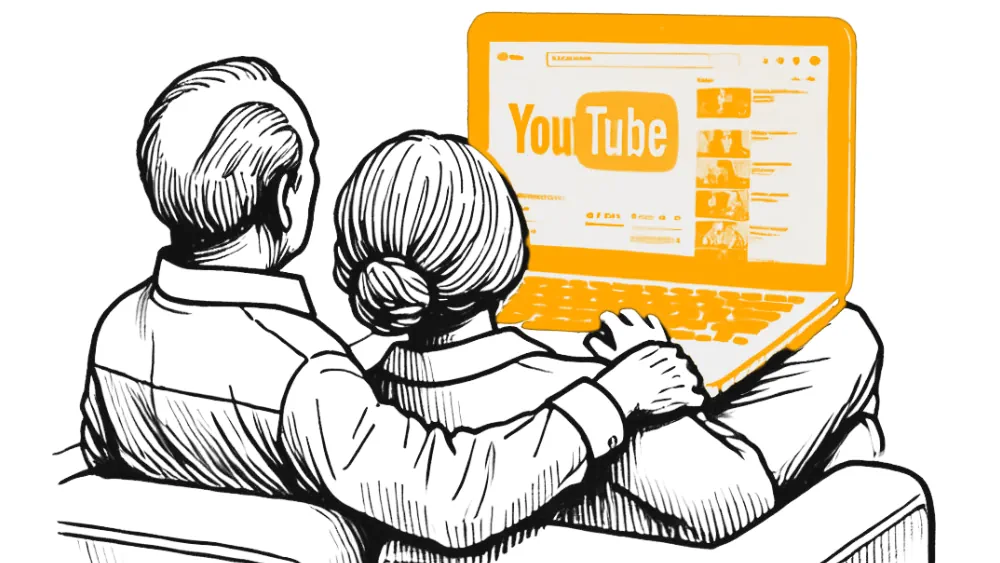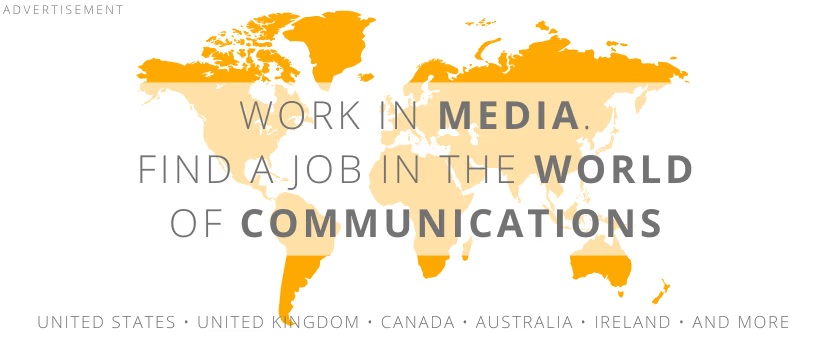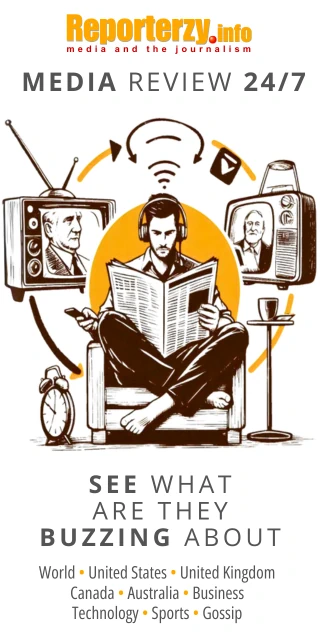 illustration: bing.com/create
illustration: bing.com/createThe Silver Generation, or people aged 50+, is a demographic often perceived by marketers as less digitally active. Common stereotypes suggested that most of their time is spent watching television, with the internet being a medium too modern and complex for them. However, the 2024 report by IQS reveals a different reality. Silvers not only use the internet but actively consume video content, with 46% of respondents doing so daily.
YouTube Leading Among Video Platforms
YouTube emerged as the unrivaled leader among video platforms for people 50+. A full 77% of silvers surveyed identified YouTube as their primary online source for video content. Following were Facebook (65%), news portals (46%), and VOD platforms like Netflix and Player (33%). Surprisingly, the older generation actively seeks professional, educational, and entertainment content, creating vast potential for content creators and marketers.
Marcin Pyć, Head of Network Management at Lifetube, notes that while silvers are one of the largest groups on YouTube, there is still a lack of content targeted directly at them. Channels dedicated to this age group are still rare, meaning creators have great opportunities to develop valuable, tailored materials.
Changing Content Consumption Habits
One of the report`s key findings is the gradual shift of the Silver Generation from traditional television to the internet. A total of 46% of respondents stated that their online activity has increased over the past three years at the expense of television time. This significant change should prompt companies and marketers to shift some of their advertising efforts to online platforms like YouTube to reach this growing audience.
Joanna Adamiak, PR expert and CEO of Face it! agency, emphasizes that more companies are recognizing the internet`s potential in reaching the older generation. Once seen as technologically excluded, silvers now actively use social media and digital communication tools. As a result, online campaigns are becoming more effective, authentic, and precisely aligned with the needs of this consumer group.
Diversity of Content is Key to Success
Although older, the Silver Generation exhibits a wide range of interests. The report found that silvers` most-watched content includes news and information (68%), educational and instructional videos (47%), and music content (45%). The high popularity of educational and informational materials indicates a demand for valuable, professional content that meets their needs and interests.
Beata Borucka, known as “Wise Grandma” and the biggest silver influencer in Poland, points out that mature viewers seek content suited to their needs, eagerly use tips and recommendations, and value the opportunity for interaction. Thanks to the internet, silvers can comment, discuss, and share their views, which gives them a sense of influence over reality and a voice in public discourse.
Online Advertising and Online Shopping
The Silver Generation’s growing internet activity also directly impacts their shopping preferences. More than half of those surveyed (54%) reported buying a product they saw advertised online. Interestingly, silvers pay special attention to price and detailed product descriptions (71% and 67% of respondents, respectively). Other key factors include seeing the product in use (50%) and highlighting the benefits of purchase (33%).
How clickbait was born? Let's take a look inside headline TRAPS 👇
Izabela Wojciuk, Marketing Director at Biowen, notes that the Silver Generation not only shops online but is also increasingly guided by expert and influencer recommendations. The use of social media platforms and creator-generated content is becoming essential in communicating with this group, which seeks valuable content and is increasingly resistant to generic ads in traditional media.
Insights for Marketers and Content Creators
The IQS report provides valuable insights for companies and marketers looking to reach the Silver Generation effectively. The study’s findings show that stereotypes about this group’s lack of digital activity are outdated. Silvers not only spend time online but actively consume video content, have favorite platforms, and even shop online.
For content creators, this means creating materials that cater to the diverse needs and interests of this group. It’s worth investing in educational, informational, and entertaining content that will engage and attract mature viewers. For marketers, it’s essential to understand that the internet is becoming an increasingly important communication channel with the Silver Generation, which should prompt them to review their marketing strategies and increase budgets for online activities.
The report’s conclusions highlight the growing potential of the online content and advertising market targeted at silvers. This is a group that not only wants to but can actively participate in the digital world, and its importance will only grow in the coming years.
The full report “YouTube: The New TV for Silvers” can be downloaded at:
https://www.lifetube.pl/lp/raport-youtube-pokolenie-silver
COMMERCIAL BREAK
New articles in section Media industry
Why do we believe fakes? Science reveals the psychology of virals
KFi
Why do emotions grab more attention than evidence, and why can a fake authority overshadow scientific data? Researchers from Warsaw University of Technology, Jagiellonian University, and SWPS University in Poland sought the answers. Here are their findings.
Investigative journalism in Europe. Newsrooms face pressure
KFi, Newseria
Media and political representatives point to the difficult situation of investigative journalism in Europe. Newsrooms are reluctant to invest in this segment due to high costs and the large amount of time and effort required. Most of all, however, they fear legal proceedings.
Energy under attack. Disinformation threatens Poland’s power transition
KFi
One in five online messages about energy may be fake. Between 2022 and 2025 nearly 70,000 publications warning and condemning disinformation in this strategic sector were recorded in Polish media. They generated a reach of 1.19 billion impressions.
See articles on a similar topic:
How do we assess news credibility? Data analysis from 40 countries
Krzysztof Fiedorek
Are people defenseless against false information? Do they really fall for clickbait and fake news? A meta-analysis of 67 studies involving 200,000 people shows the problem is different than we thought. Instead of excessive gullibility, we are dealing with the opposite.
Social Media and Relationships. Interesting Research from Palestine
KFi
What does love look like in the digital age? Does technology bring people closer or push them apart? In an era where Facebook and Instagram replace dinner table conversations, social media has become a new space for marital relationships. Researchers from An-Najah National University examined how technology can build bonds but also sow uncertainty.
Fake News and Disinformation in Poland. Scale, Impact and Future
Bartłomiej Dwornik
Where do the sources of disinformation lie, and how large is the scale of this wave? Why are we so susceptible to false information, and what role do traditional media play in this puzzle? Let’s shed some light on these issues and face the question: can the battle against the flood of disinformation still be won?
The most valuable female personal brands in Polish fashion. IMM report
KFi
The ten most popular people in Poland in the "fashion" category generate over 1.5 billion contacts across all types of media in a year. Their value is nearly 400 million zlotys. The ranking was prepared by the Institute of Media Monitoring for "Forbes Women" magazine.






























